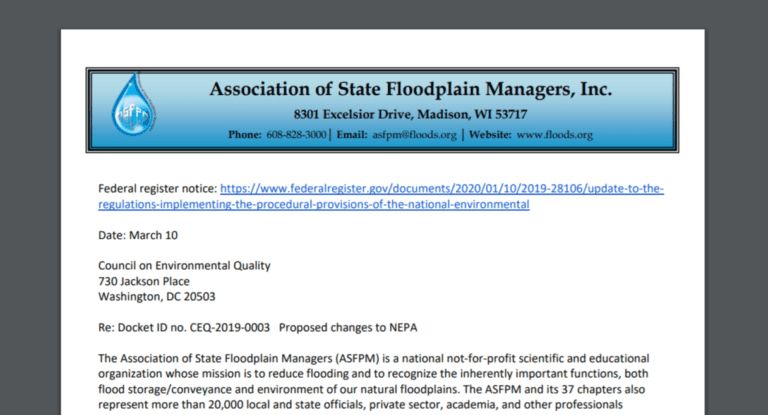White House issues New Executive Order on Federal Flood Risk Management, ASFPM Supports New Standard
White House issues New
Executive Order on Federal Flood Risk Management, ASFPM Supports New Standard
President Obama issued a new Executive
Order Jan. 30 that proposes a new Federal Flood Risk Management Standard,
which the Association of State Floodplain Managers says will ultimately help
reduce flood losses and taxpayer costs.
Two federal coordinating groups that deal with floodplain
management issues– Federal Interagency Floodplain Management Task Force and
Mitigation Framework Leadership Group (MIT-FLG) – have been working on the new
standard for the past year. The standard would apply to federal actions such as
federal grants used for repair and redevelopment after a natural disaster.
“In the last 50 years, we as a nation have learned a lot
about floodplain management and flood risk,” ASFPM Executive Director Chad
Berginnis said. “The changing nature of flood risk, including increased risks
due to sea level rise, demands competent standards that will withstand the test
of time and the forces of nature. And we think the FFRMS is a great step in the
right direction.”
Berginnis highlighted elements of the draft
guidelines he thinks will benefit our nation the most in reducing flood
losses and taxpayer-funded disaster costs:
The new standard incorporates a freeboard, or an
additional height above the national minimum standard, that represents a safety
factor. Freeboard is one of the most common standards that more than half the
nation has already adopted. It’s easy to do and reduces future flood insurance
costs. A freeboard of 2 feet in general, and 3 feet for critical facilities,
which is called for in the new standard, is reasonable and doable.
The new standard could be implemented by applying the
freeboard or using science-based future conditions that consider changes in
land use, climate change informed hydrology, or future sea level rise.
Alternatively, the standard could be met by building to the 500-year (.2
percent annual chance) flood elevation.
We also know significant flood losses occur outside of the FEMA-mapped floodplain. Mother Nature simply
does not recognize our flood mapping boundaries, and the FFRMS would require
applying the freeboard when determining where
the standard applies.
“The administration
did not throw the baby out with the bathwater,” Berginnis said. “Rather,
targeted updates to outdated standards will supplement current direction
to federal agencies and should result in more resilient federal investments. ASFPM
supports the administration’s efforts to develop a better FFRMS than we have
now. To ignore the rising trends in flood damages – now exceeding $10 billion
per year – and stay with the status quo is to accept that it is better to
repeatedly waste taxpayer money repairing flood-damaged facilities that are not
resilient to future flood risks.”
The draft FFRMS
implementing guidelines are on the FEMA website, and starting today, comments
may be submitted via email over the next 60 days. See the White House Council
on Environmental Quality’s Fact Sheet for those details.
ASFPM, a national
association based in Madison, Wis., promotes education, policies, and activities
that mitigate current and future losses, costs, and human suffering caused by
flooding.
We’ve also created an FFRMS resource page, which you can see here.

